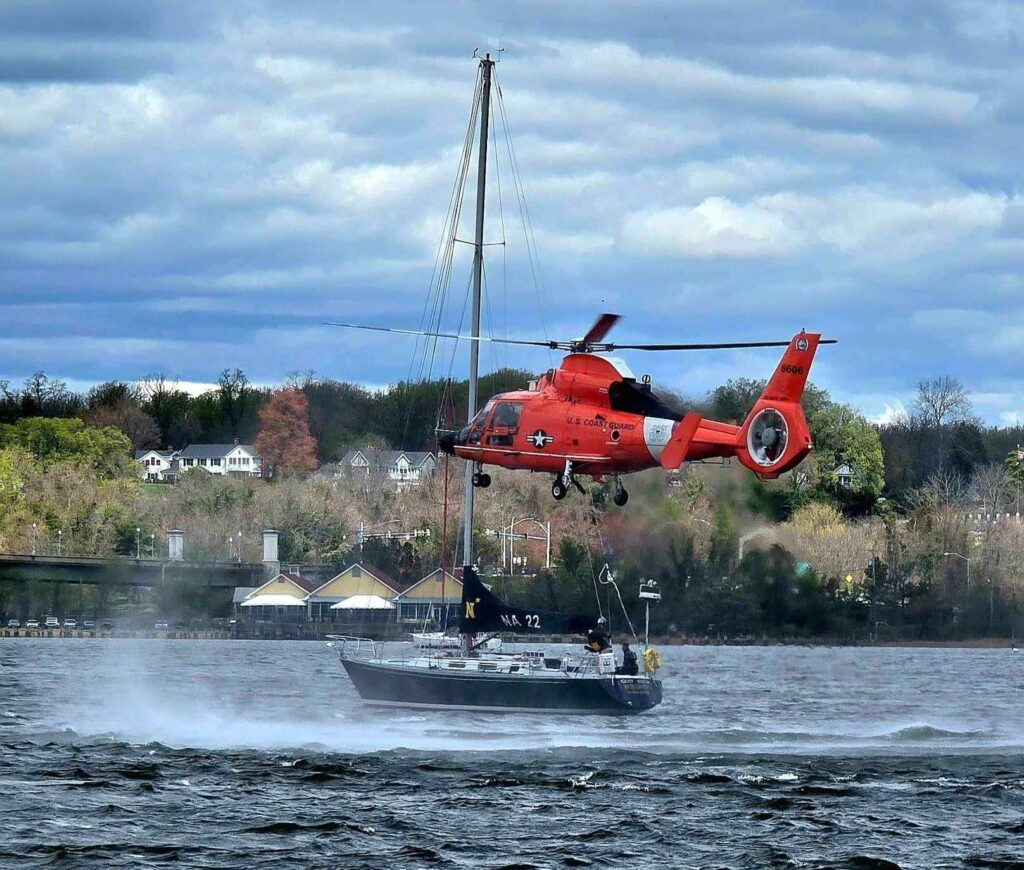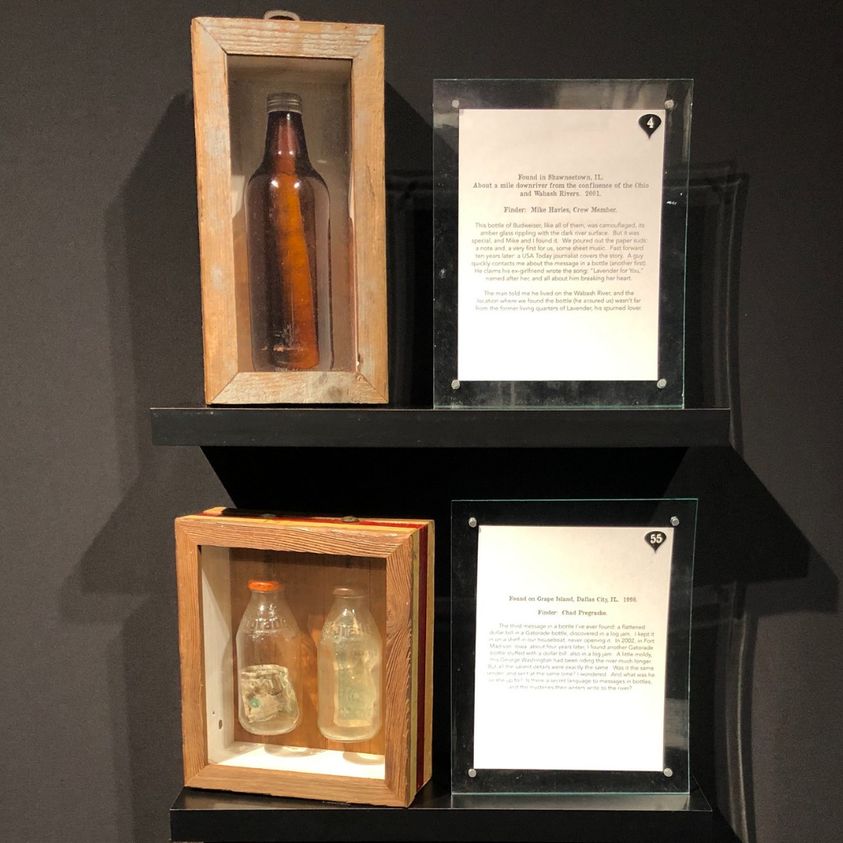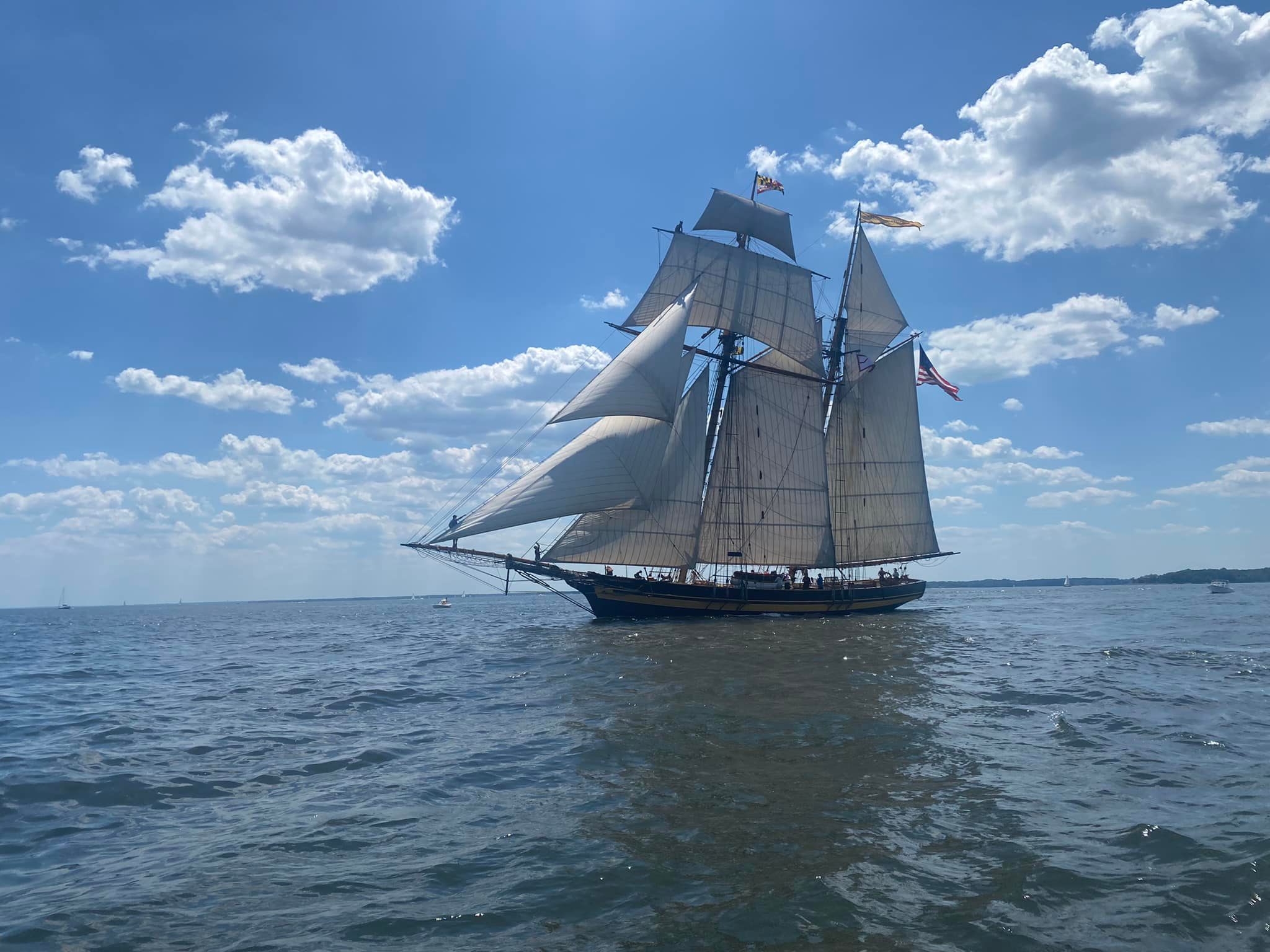Whether you’re an offshore sailor on a racing boat or a cruiser who likes to take multi-day trips on the Bay, it’s vital to know how to use your safety equipment. You may have a life raft on board, but could you pull it out and deploy it while your boat is taking on water in gale conditions? You may have a life ring to throw to a fellow boater who falls overboard, but have you ever practiced hauling someone in?
The upcoming Safety-at Sea Seminar in Annapolis uses an incredibly hands-on approach to make sure sailors have the right equipment and can capably use it, even when they’re under duress in extreme conditions.
On March 29-30, 2025, the Naval Academy and the Marine Trades Association of Maryland (MTAM) will put on the 43rd running of this seminar. Training takes place in the classroom, in the pool, and even includes a helicopter rescue demonstration off the Naval Academy seawall, weather permitting.
There’s a reason this US Sailing-sanctioned program is a requirement for several ocean racing events, like the Annapolis to Bermuda Race. The course started in the aftermath of the deadly 1979 Fastnet Race, in which a nasty storm in the UK sank five boats, killed 15 sailors, and left 24 boats abandoned. Only 85 of the 303 starters finished the race.
Most boaters, even well-prepared ones, have never had occasion to use most of their emergency equipment. To better prepare sailors for extreme circumstances like the Fastnet, organizers of the Safety-at-Sea Seminar have spent four decades annually assembling experts with considerable offshore experience and safety knowledge.
During the waterfront portion of the seminar, Naval Academy Midshipmen will conduct man-overboard rescue demonstrations, life raft deployment, and pyrotechnic sail demonstrations from Navy Sailing training vessels. As long as the weather cooperates, the Coast Guard will perform a helicopter Search and Rescue Swimmer (SAR) demonstration.
Tip: Even if you’re not taking the course, the demonstrations are open to the public and fun to watch. You can see the one-hour event Saturday, March 29, 12-1pm, from the Naval Academy seawall adjacent to Dewey Field. Afterwards, certain vessels will be docked and available to see in nearby Santee Basin on Naval Academy grounds.
Back on land, seminar attendees will practice inflating a PFD, boarding a life raft, and learn about hypothermia, fire safety, communication and damage control. Captain Matt Benhoff, Vice President of the Annapolis School of Seamanship (CBM’s sister company), has contributed as a speaker and instructor over the past decade.
Benhoff says one of the most valuable things participants can do is bring their own equipment to try out. Boaters can experience what it’s like to operate safety equipment while being weighed down with gear. They’ll practice with PFDs, tethers, getting in and out of rafts as a group, using life rings, and dewatering a vessel with pumps. Best of all, they can do it in a “safe, controlled environment,” Benhoff points out. “I tell them, ‘Picture doing this at 2 a.m. in 50-degree water,'” he says. It’s a scary thought, but an important thing to prepare for.
For the offshore sailors, Saturday seminar participants can earn an Offshore Safety at Sea certificate, valid for five years. Saturday and Sunday participants can earn a two-day International Offshore Safety at Sea certificate.
Cruisers can pick up valuable knowledge and experience that offshore racers need, too. Safety for Cruising includes all of the Saturday talks and demonstrations, some of the Sunday programming, and can including a US Sailing Offshore certificate. For registration and information, visit mtam.org/safety-at-sea. Or call 410-269-0741.



